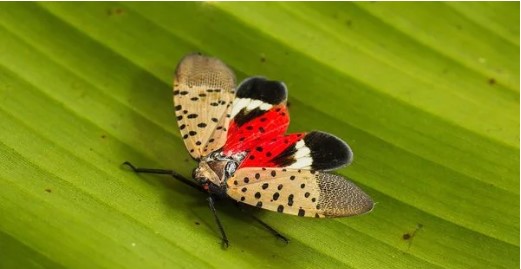Did you know that there’s a new predator in the United States? It’s called the lanternfly, and experts are urging people to take action and kill it on sight. Don’t let its beautiful appearance fool you, this insect can wreak havoc on our environment.

Scientifically known as Lycorma delicatula, the lanternfly is incredibly destructive to over 70 plant species, including plants, fruits, and trees. These bugs have insatiable appetites and reproduce rapidly, posing a significant threat to our ecosystem.

While lanternflies don’t travel far on their own, they easily hitch a ride on animals, humans, and vehicles. This means they can quickly spread and cause even more damage.
But the problem doesn’t stop there. The feeding process of the lanternfly produces a sugary liquid called honeydew, which promotes the growth of mold and weakens the health of plants. This not only affects our agriculture but also threatens our fight against climate change.

The lanternfly was first discovered in Pennsylvania in 2014, and it has since become a serious concern. The state took action by issuing the “Spotted Lanternfly Order of Quarantine and Treatment,” which imposes fines and criminal penalties on those who intentionally transport the bug.

But this insect’s impact extends beyond Pennsylvania. The Department of Agriculture in New York is also taking steps to protect their vineyards in Finger Lakes and Long Island, where lanternflies pose a grave threat. They have issued an order for people to collect any lanternflies they encounter, placing them in jars filled with rubbing alcohol to kill them.

Researchers are working tirelessly to control the lanternfly population and prevent further damage. With the ongoing climate crisis, it is essential to take swift action to protect the Earth’s biodiversity. The battle against the spotted lanternfly is on, and we are determined to win.

So, remember, if you see a lanternfly, don’t hesitate to take action. Together, we can make a difference and safeguard our environment for future generations.